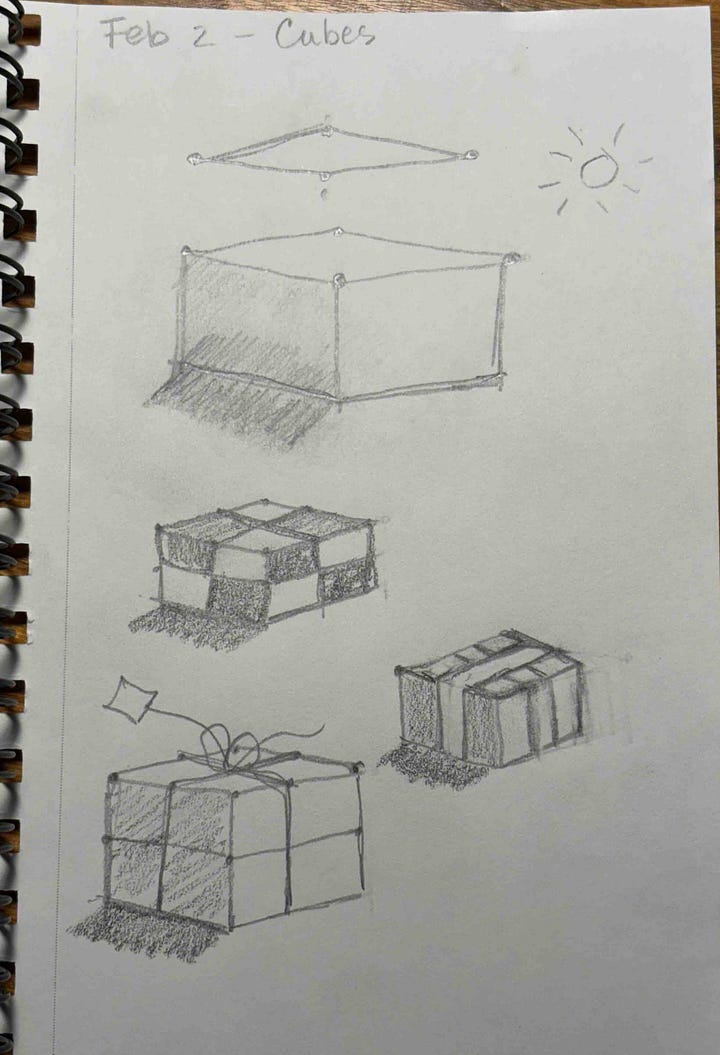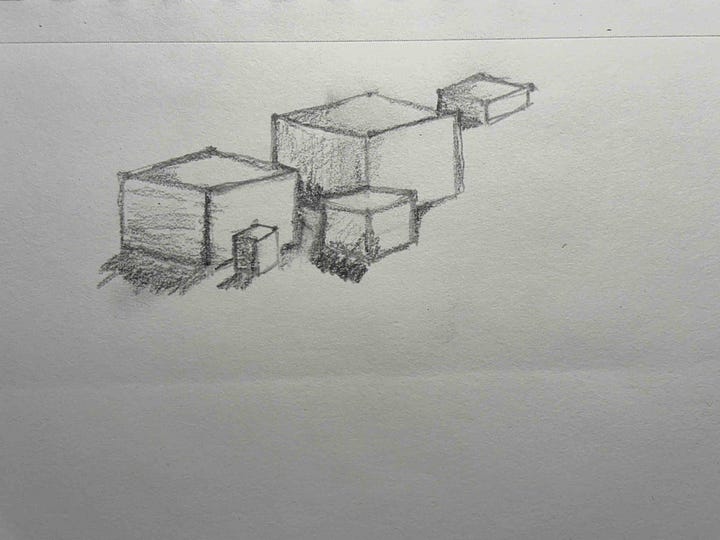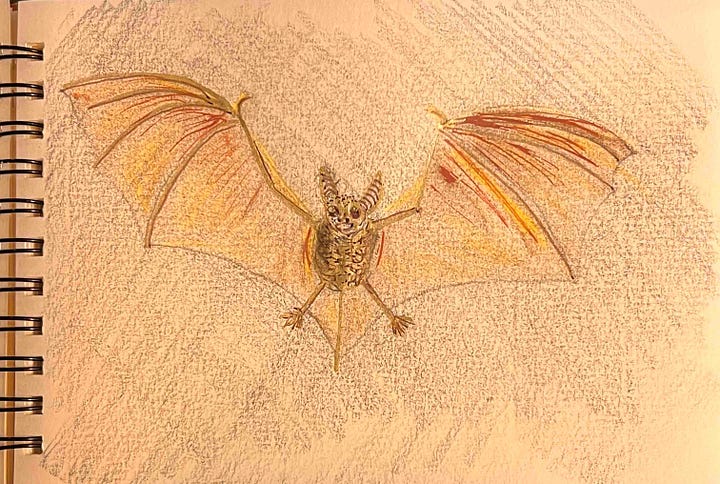

February 2, 2025
Hi Nikki,
Hope your day was a bit less stressful than yesterday--no long drives in a snowstorm or unclogging a hotel toilet! Or drawing every hour. Today I learned to draw cubes using foreshortening. First step on my way to being able to draw groups of buildings (or even just a single building. See attached: brick building from the early 1900s at Work Point, CFB Esquimalt, visible from my window).
Do you ever listen to the podcast Hidden Brain? I recommend it, particularly an episode called Wellness 2.0: The Art of the Unknown. The host interviews a political scientist who studies how we respond to random events. Fascinating stuff.
Stay warm and safe. I'll do the same. More snow is forecast and you know how Victoria gets when that happens!
February 2, 2025
Dear Sarah -
Stay warm, you say? That’s a lovely thought… I wore my pj bottoms under my work pants today while showing a place at the other end of the city from my hotel. My packing wasn’t as thorough as it might have been.
What a great building you can see from your window!! And, what a good reminder that the point of drawing spheres, lines, and cubes is not to draw spheres, lines, and cubes but to be able to draw something as cool as that brick building of yours! Ooooh… can’t wait to see how you manage that challenge!
Meanwhile, back in the hotel room, I didn’t bring a full complement of drawing tools - a few random pens, some soft pencils (you know how I love those), and two coloured pencils (yellow and some sort of shiny gold).
Totally at a loss as to what to draw, I Googled… “How to draw…” and randomly chose ‘a bat’ from the list of options Google kindly offered me. And, yes, I then proceeded to a YouTube tutorial and followed along as best I could with all the wrong materials - no felt pen of such and such a number, etc.


The result is a wonky bat (before and after a soft-pencil background). I love bats, so I think I’ll give this another go using photo reference, maybe combining some careful observation with our upside-down technique from the other day. As with spheres, cubes, etc., following along with someone else’s interpretation of ‘bat’ is also practice in breaking these creatures into their component forms and looking carefully to see how they are actually put together.
Lesson learned — bats have tails (the stick thing that extends between my bat’s legs) and those tails do, indeed, support the wing membrane. I don’t think I ever considered what a bat’s tail might do and left to my own devices may have drawn such an appendage floating in the air behind the bat, unattached to the wings.
Thank you for the podcast recommendation… I had not heard of Hidden Brain. Off to search for it now…






